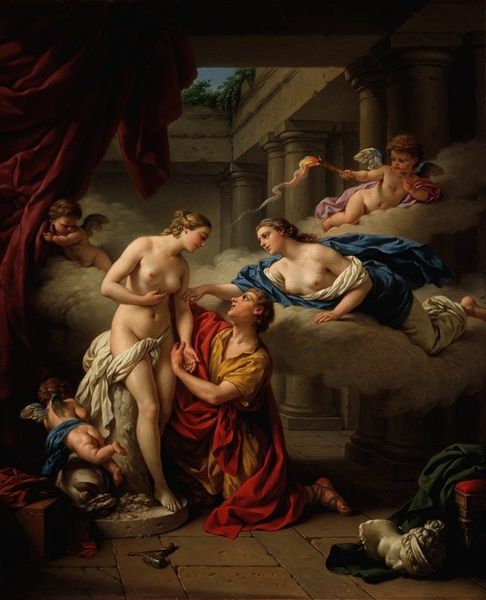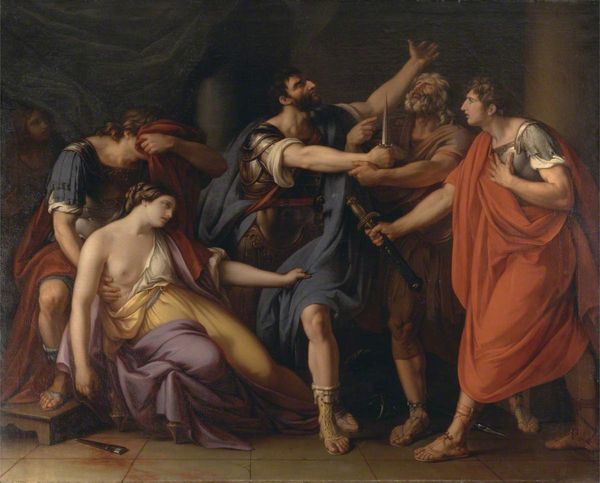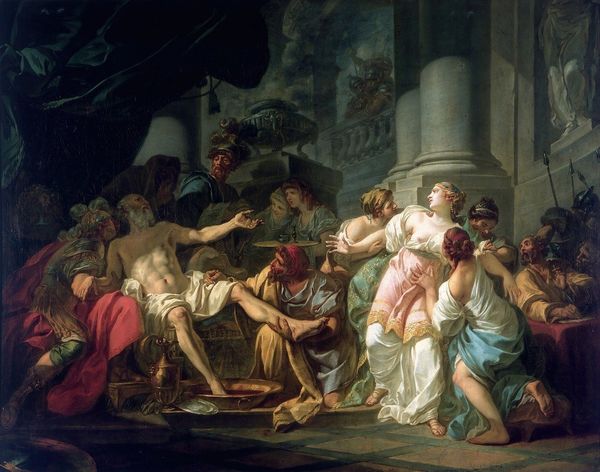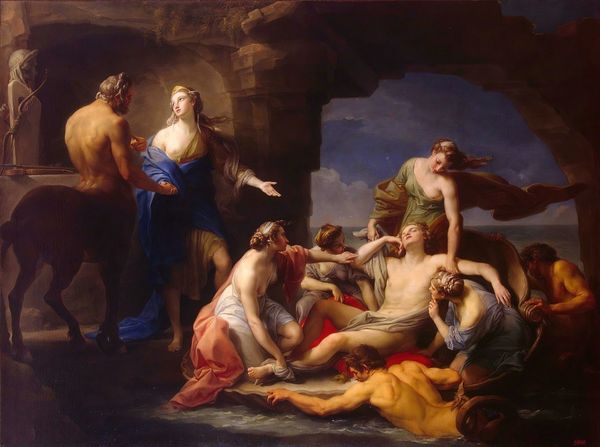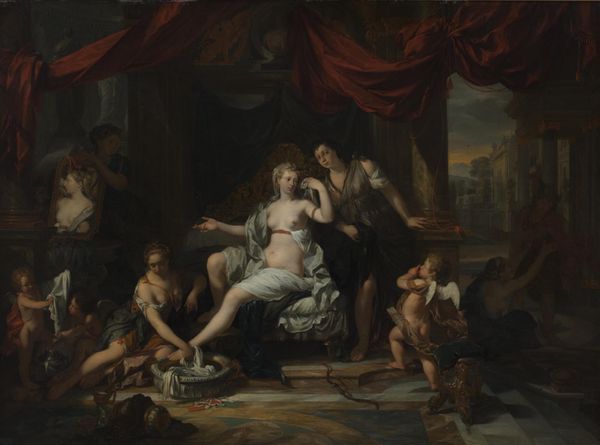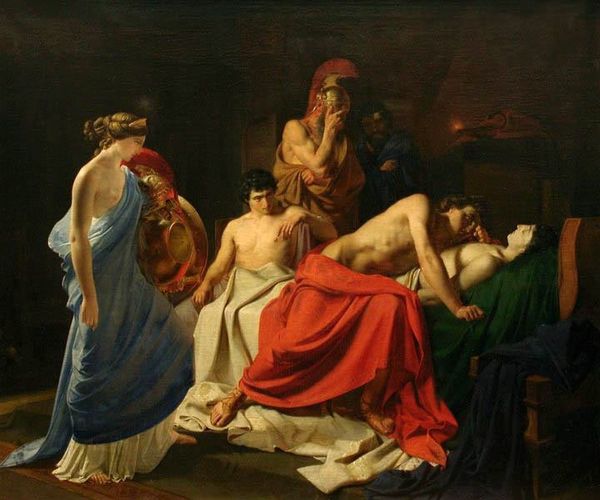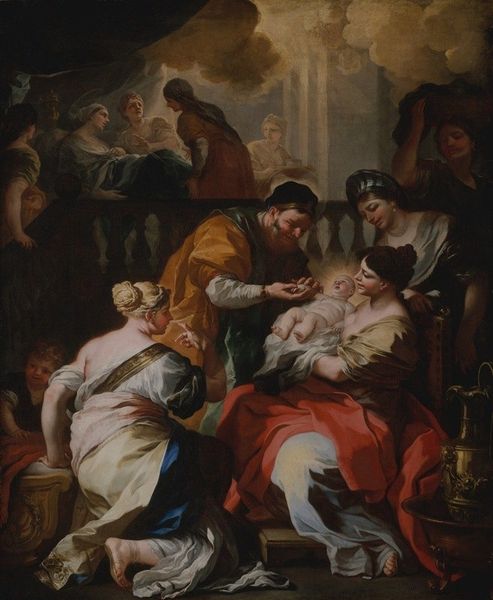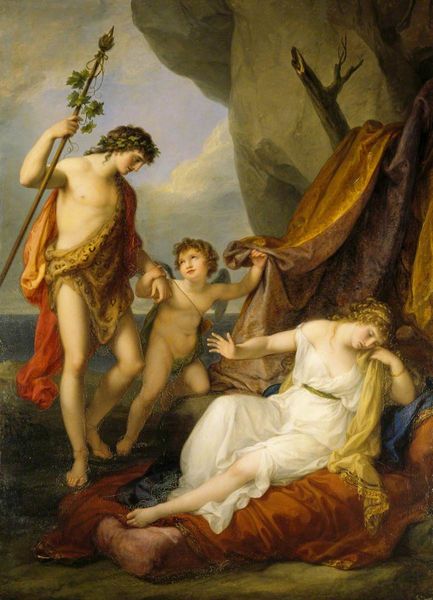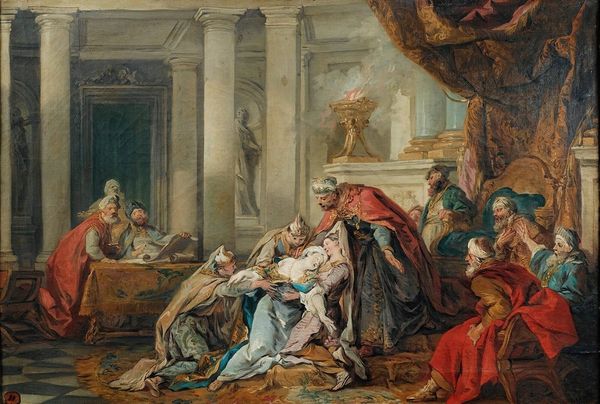
Copyright: Public domain
Editor: So, this is Gavin Hamilton’s “Andromache Bewailing the Death of Hector,” painted in 1759. It’s oil on canvas, and quite imposing. All that grief feels so... staged. What do you see in this piece? Curator: More than staged, perhaps, encoded. Observe the cluster of figures. Each one, arranged almost theatrically, embodies a distinct facet of mourning, a prescribed performance of grief echoing through generations. Note how the artist uses this grouping to comment on societal expectations during bereavement. Editor: So, you’re saying that their gestures, even the way they're positioned, are all symbols? Curator: Precisely! Andromache herself, draped across Hector’s body, becomes a potent symbol, not only of personal loss but also of the fall of Troy, do you agree? Consider the color choices: the somber palette, the use of chiaroscuro… Do those techniques seem accidental? Editor: No, not at all. It’s all so calculated, contributing to that overall feeling of sorrow. But isn’t there also something timeless in those emotions? The primal grief seems to cut through history. Curator: Exactly. Hamilton has tapped into the archetype, the universally understood language of sorrow. This moment in the story speaks not just of a wife's bereavement, but the wider implications of power, love, duty, and the tragedy of war, echoed through antiquity and beyond. Editor: I guess what struck me as "staged" is actually what makes it so powerful, this distillation of shared experience into symbolic forms. I appreciate how understanding these archetypes gives me a fresh perspective on what the artist may be trying to express through those figures and colors. Curator: Indeed, it reminds us that every symbol carries history and that a history reveals complex facets about our perceptions.
Comments
No comments
Be the first to comment and join the conversation on the ultimate creative platform.
